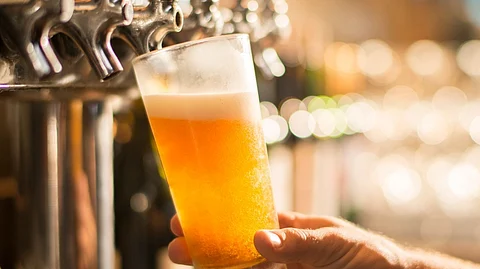
- Home
- EventsEvents
- Product Launches
- CategoriesCategories
- Advertise
- Opinion

Brenntag Specialties Food & Nutrition supports breweries with tailored enzyme solutions, process optimization, and ingredient innovation to improve efficiency, enhance product quality, and meet sustainability and export demands.
Fluctuating raw material qualities, rising production costs and growing sustainability requirements are increasingly influencing operational decisions in the brewing industry. At the same time, pressure to innovate, especially in saturated markets, is forcing breweries to tap into new product categories such as functional beers.
Brenntag Specialties Food & Nutrition supports breweries in meeting these challenges with practical, application-oriented solutions: from improved yield through enzymes and recipe stabilization to water management and the development of new uses for brewery by-products. In the following article, experts from Brenntag present specific strategies and technical approaches that breweries can use to optimize their processes, adapt to changing market requirements and use resources more efficiently.
More sustainability: Brewing with less water
The two sustainability related areas where breweries can make the greatest sustainability gains are water consumption and raw material usage. Brewing is an extremely water-intensive process, using water for everything from steeping malted grains to filtration and cleaning. Led by the major breweries, the industry has already made great strides in reducing its water footprint, according to Andrzej Turlej, European Product Manager Enzymes, at Brenntag EMEA.
“A few years ago, breweries used on average seven or eight liters of water to produce one liter of beer. That meant that about six liters of the water used was waste water that had to be cleaned and processed before being disposed of. Now, consumption is down to somewhere between two and two-and-a-half liters of water per liter of beer,” notes Andrzej Turlej, European Product Manager Enzymes, at Brenntag EMEA.
However, this rate of reduction is not yet standard across the industry. Many smaller or mid-sized breweries still have room for improvement. To support them, Brenntag offers dedicated expertise in water management, helping breweries optimize both their water use and wastewater treatment processes.
Upcycling brewing byproducts
Breweries generate significant byproducts, particularly spent grain and yeast. These residues have traditionally been used in agriculture, mainly as animal feed or fertilizer. Increasingly, however, breweries and partners along the value chain are exploring ways to upcycle these materials for higher-value applications, such as ingredients for human nutrition. Recent studies show that spent yeast can have a positive effect on metabolic health and the gut microbiota[1], making it a potential candidate for dietary supplements.However, this approach requires coordinated action across the supply chain and changes to regulatory frameworks. Current legislation often classifies brewing byproducts as 'waste', limiting their use in food applications even when the material originates from food-grade processes. As well as its core chemicals and commodities capabilities, Brenntag has specialist Food & Nutrition and Animal Nutrition business units and is used to working in an integrated way to implement closed loop solutions to sustainability challenges.
Enzymes support brewers in the age of climate change
Reducing the environmental impact of brewing operations is only one aspect of sustainability. The other challenge lies in mitigating the effects of climate change on barley, the key raw material for beer production. “Barley is the backbone of beer and needs to have certain attributes to produce a beer that will meet both the brewery’s cost efficiency objectives and the consumer’s sensory expectations,” explains Turlej.More than 60% of global barley production is concentrated in Europe, and an increasing number of extreme weather events is impacting both quality and yield of this temperamental crop. “The quality of the barley and its properties are now compared to two decades ago. In the malthouses this introduces processing problems that the brewmaster has to solve,” he says. One common issue is turbidity in the beer, particularly in lager styles. Last year, many breweries struggled with this problem due to varying malt properties, making it difficult to achieve the desired clarity.
Drawing on its extensive portfolio of enzymes, Brenntag Specialties Food & Nutrition worked with customers to find solutions to this problem. “We developed combinations of enzymes that were tailored to the requirements of each customer, according to the type of malt they were using, the style of beer they were making, and so on. Through this approach, we were able to overcome the issues that were causing the cloudiness and increase yield,” says Turlej.
Enzymes perform multiple functions in brewing, from increasing productivity and preventing haze to enhancing flavor, aroma and appearance, extending shelf-life and ensuring product consistency.Rising input costs in the last few years have led to more breweries turning to enzymes to make their processes more efficient. One example of this approach is the use of enzymes to improve the brewhouse yield, to reduce the amount of malt that is needed for wort production.“The less malt needed to produce the wort , the better it is for both the brewery’s profitability and the environment, the better it is for the brewery’s bottom line and for the environment,” says Turlej. “This is something that customers are asking for more and more, and it is very easy to compare the performance of different enzyme combinations as the proof is in the productivity: improved yield means less malt, which results in less waste and spent grain.”
Source - Brenntag
Click HERE to subscribe to our FREE Weekly Newsletter
